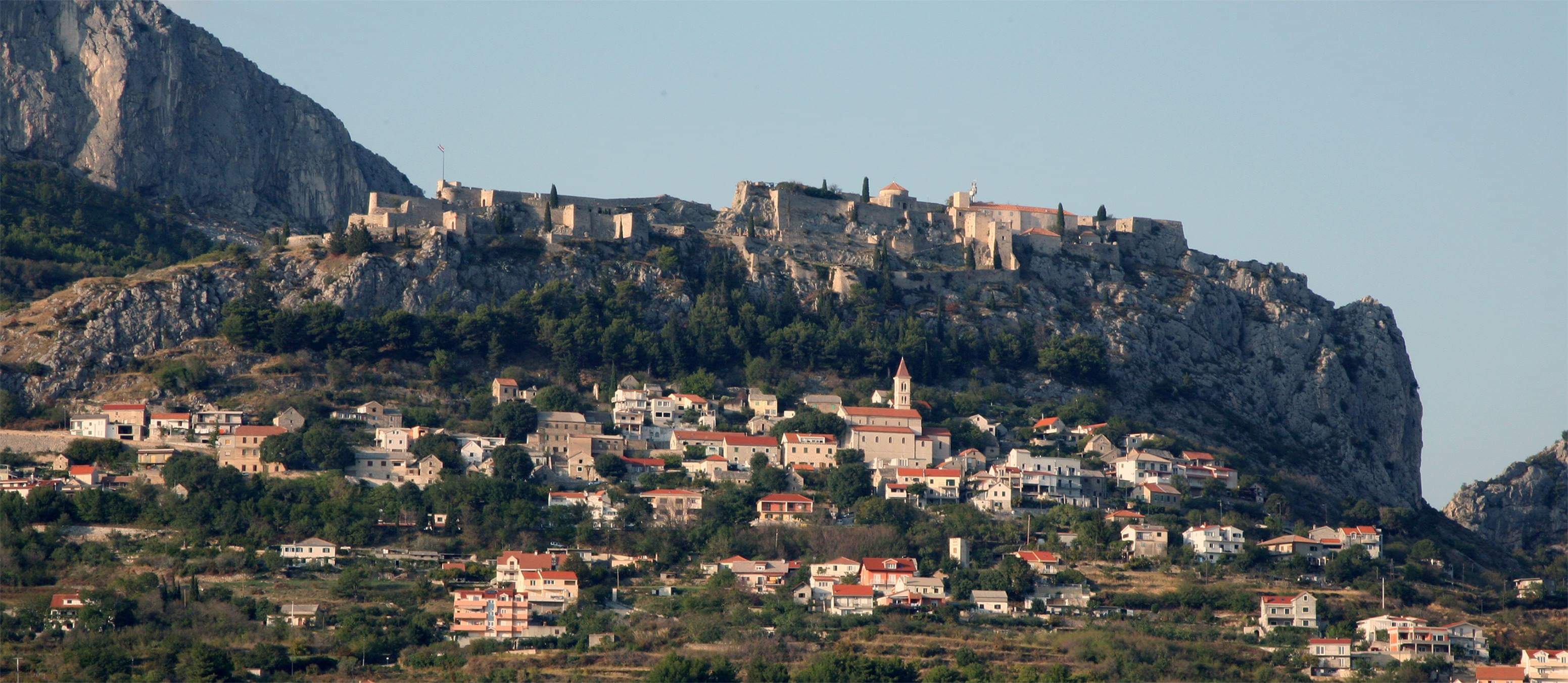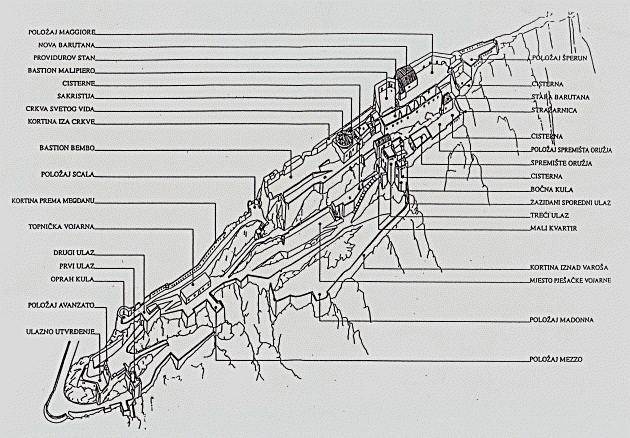
The first defensive fortifications
The first defensive fortifications are located on the far west of the fortress. Interior of the fortress is accessed through the first entrance near which, somewhat northward, there were the first gates in the Middle Ages. That gates, along with nearby fortifications, were partially demolished by Venetians during the siege in 1648.
The first gates
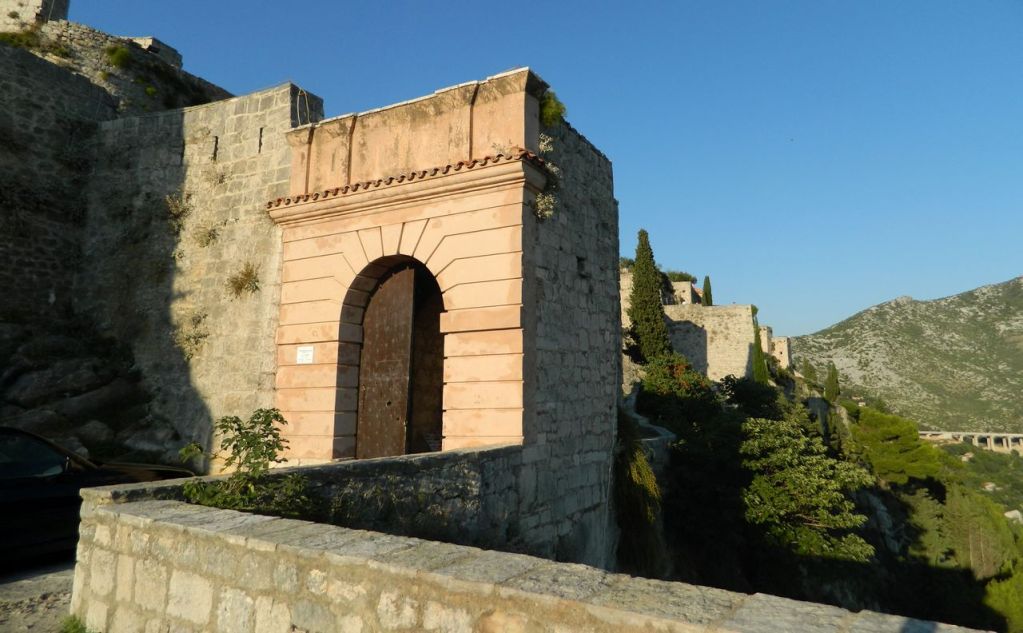 This semi-circular gateway was built during the Austrian reign in the 1820s, after the old simple Venetian gateway (Porta del Primo Recinto) was removed from this place. Its terrace on the top is enclosed by a low wall.
This semi-circular gateway was built during the Austrian reign in the 1820s, after the old simple Venetian gateway (Porta del Primo Recinto) was removed from this place. Its terrace on the top is enclosed by a low wall.
Earlier, the gates had double doors, and that is detectable through preserved grooves on its walls that were intended for the wooden doors.
Even earlier, the gates, according to preserved remains, were also two-sided and wooden. They were reinforced with large wedges on the outside, and they were secured with locks, latches and joists on the inside. Interspace could be filled with earth at time of siege, which would then contribute to firmness of the gates in case of cannon fire.
Entry fortification and position Avanzato
Position Avanzato was mentioned for the first time as front position (Posto Avanzato) in 1648. Its purpose was to protect the first and the second gates which, because of its position and then increasing use of siege artillery, presented a weak point of the fortress defence. Venetians have rebuilt it several times until mid-18th century. Then, on the north side, they raised a high protruding prow. The position was also called position Tenaglie (eng. pliers) because of its L-shape.
The second defensive fortifications
The second defensive fortifications extend to the central part of the fortress, between the first and third gates. This area is separated by ramparts and bastions.
The second gates
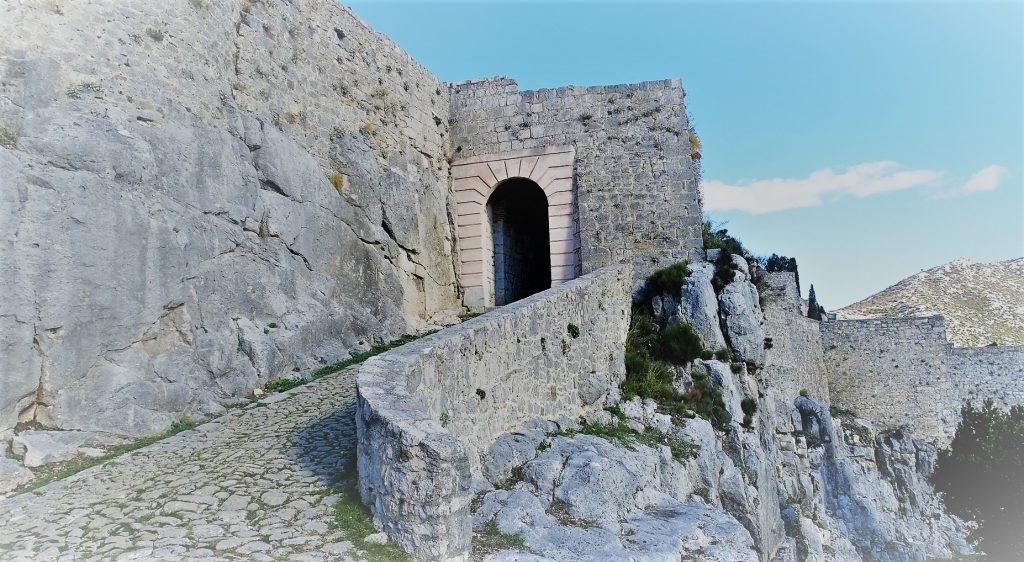 This fortified entrance (Porta del Secondo Recinto) with a terrace on top is approached from the west by steep slope that was tiled in the 1930s. There already existed a medieval entrance there and it was heavily damaged in the siege of 1648, but Venetians subsequently renewed it completely.
This fortified entrance (Porta del Secondo Recinto) with a terrace on top is approached from the west by steep slope that was tiled in the 1930s. There already existed a medieval entrance there and it was heavily damaged in the siege of 1648, but Venetians subsequently renewed it completely.
Bulwark towards Megdan
Oprah Tower and remote east position called Scala are connected by a long bulwark towards Megdan (Cortina verso il Meidian) with series of loopholes. From southern side of the bulwark, there is a narrow guard trail that also served as a defensive position. By the middle of the 17th century, the bulwark had a late-medieval appearance with a characteristic toothed top whose height was somewhat lower than it is now.
Oprah Tower
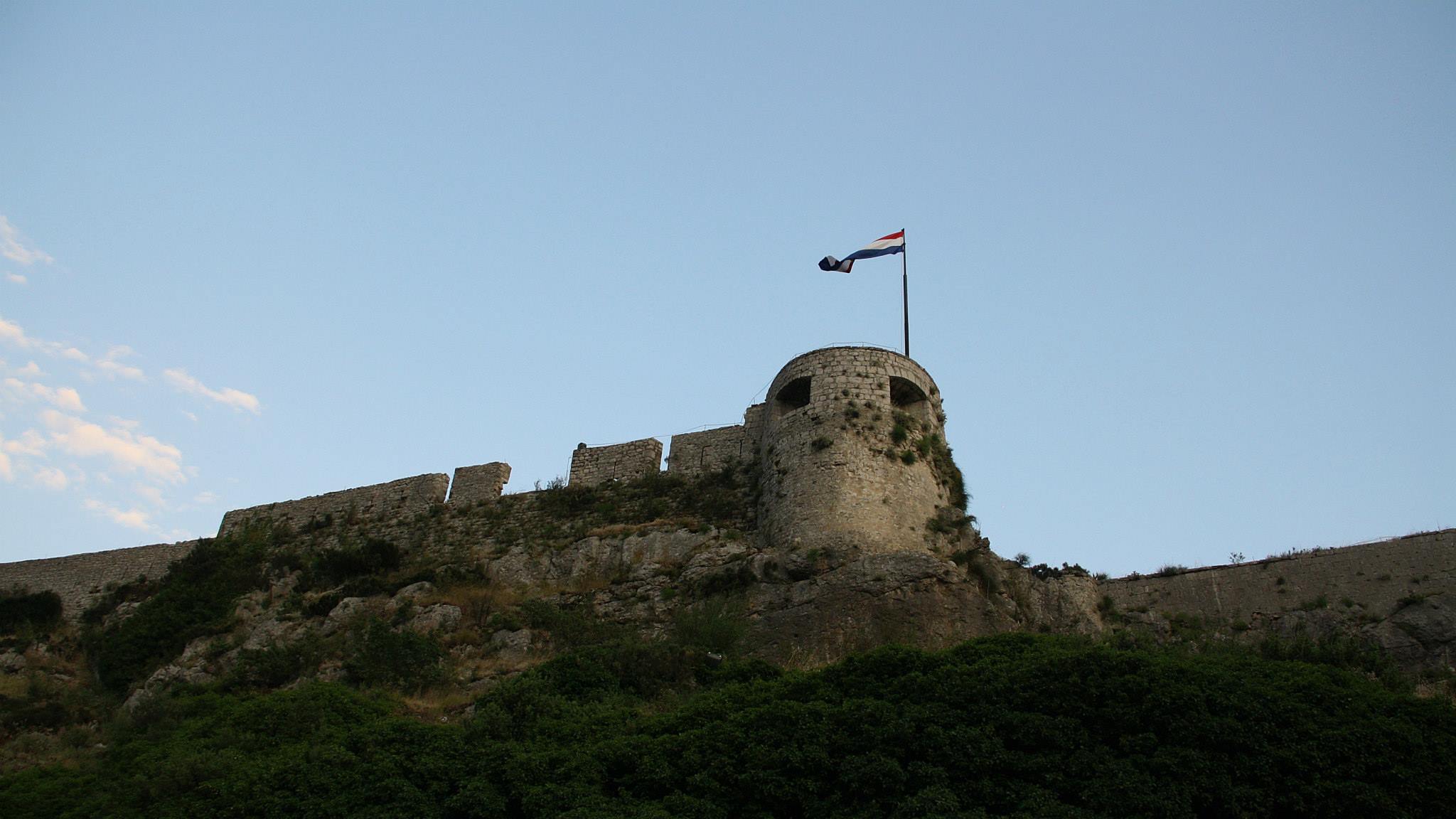 This medieval tower was once the most important defence stronghold of western part of the fortress. It is mentioned for the first time in the report of Pavao III Šubić in 1355 by name Oprack, while in the Ottoman times it was named Pasha Tower. In the mid-17th century, Venetians named it Torretta (eng. turret, tower), and that name was later used by Austrians as well. However, the tower retained its original Croatian name Oprah among locals throughout time, and it is still called Oprah today.
This medieval tower was once the most important defence stronghold of western part of the fortress. It is mentioned for the first time in the report of Pavao III Šubić in 1355 by name Oprack, while in the Ottoman times it was named Pasha Tower. In the mid-17th century, Venetians named it Torretta (eng. turret, tower), and that name was later used by Austrians as well. However, the tower retained its original Croatian name Oprah among locals throughout time, and it is still called Oprah today.
Position Scala
Located western of bastion Bembo, position Scala occupies a smaller space of an irregular square shape. It is enclosed by relatively thin walls where four loopholes existed earlier, and today there are two broad openings for cannons.
Artillery barracks
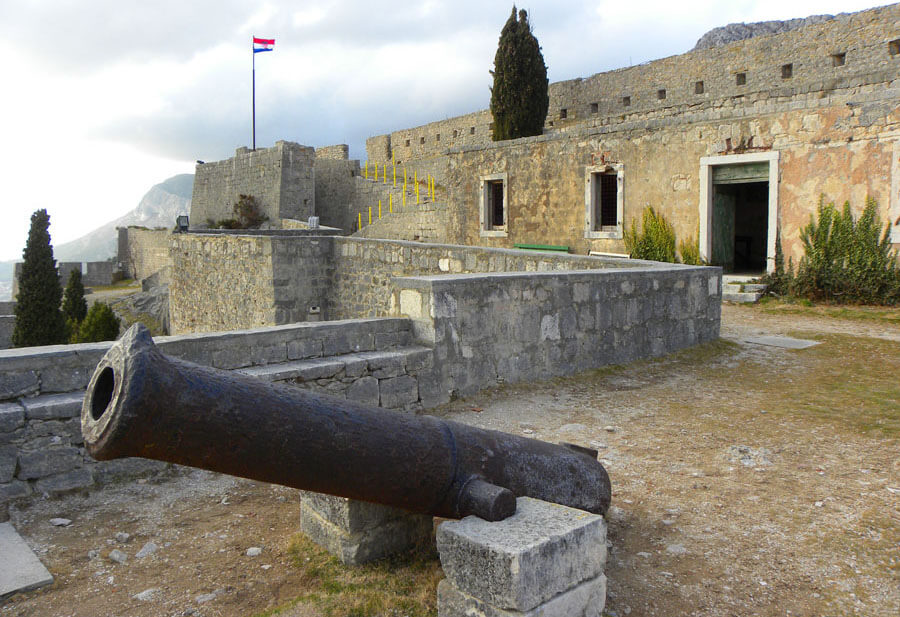 In the twenties of the 19th century, Austrians made a curved earthen ramp and an artillery barracks building. In 1931, its upper floor was demolished, while the ground floor remains still preserved today.
In the twenties of the 19th century, Austrians made a curved earthen ramp and an artillery barracks building. In 1931, its upper floor was demolished, while the ground floor remains still preserved today.
Sidelong fortifications
Sidelong fortifications of irregular rectangular shapes extended below the artillery barracks. The largest elongated fortification was called position Mezzo (eng. middle). In the time of Venetian authority there were guardhouse, two smaller houses and fortified entrance that was used for communication with eastern and southern parts of the fortress until the beginning of the 18th century.
Water cisterns
Water supply was an important factor in the defence of Klis, which was often exposed to long lasting sieges, and in such circumstances its defenders lacked water. Since there were no natural springs in the fortress and no possibility of building wells, only solution to this problem was a construction of water cisterns. They were built in places where was usually the greatest need for water in time of siege.
Southern part of the fortifications
At the eastern end of bulwark above Varoš, there are two smaller walled up openings of former secret entrances through which one could exit and enter the fortress unnoticed.
The third defensive fortifications
At elevated part of cliff, strategically well suited for defence, there are the third defensive fortifications, which were also the fortress' most significant part. Raised above the other fortifications, they represented a dominant and a centre of the fortress and also final defensive line of Klis. At the times, at this position, there was an Illyrian fort and then Roman "castrum", on which foundations one of the first old-Croatian fortresses, the seat of medieval Croatian kings, was built.
The third gates
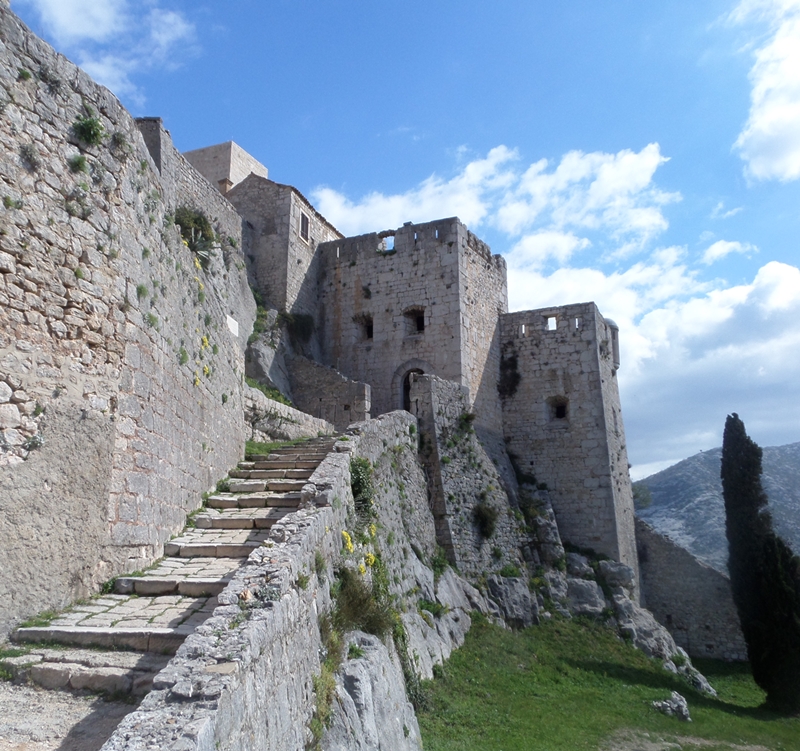 The third gates are approached by a wide tiled stair leading to the entrance that was made as a passage through guardhouse. In front of the gates there is a smaller defensive area (Barriera) on whose walls are narrow loopholes. The south-east corner of the gates is supported by high lateral tower (Torre Bastionata) of irregular rectangular shape, whose walls of different stone structures point out several stages of its construction. Established in mid-18th century, and according to historical data completed in 1763, the tower was intended to defend the gates and the part of settlement Varoš.
The third gates are approached by a wide tiled stair leading to the entrance that was made as a passage through guardhouse. In front of the gates there is a smaller defensive area (Barriera) on whose walls are narrow loopholes. The south-east corner of the gates is supported by high lateral tower (Torre Bastionata) of irregular rectangular shape, whose walls of different stone structures point out several stages of its construction. Established in mid-18th century, and according to historical data completed in 1763, the tower was intended to defend the gates and the part of settlement Varoš.
Armory position
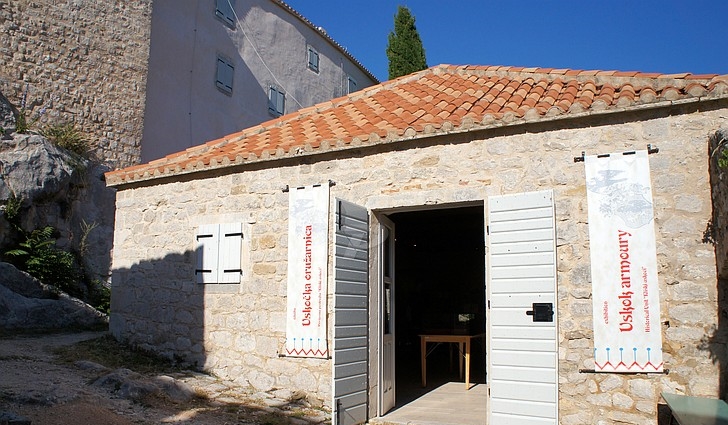 In mid-18th century this area was called armoury position (Piazzetta della Monizion), while the western part of its southern wall was called Corner (Mura Corner). Along steps, behind the entrance, one of the oldest water cisterns is located. It has an irregular rectangular shape with a semi-circular arch, above which is an enclosed terrace. Opposite of the cistern there is a ruin of ammunition and weapons storage (Munizioni) that was later used by Venetians as a storage of tools, and at the time of Austrian authority it was a storage of cannon stands.
In mid-18th century this area was called armoury position (Piazzetta della Monizion), while the western part of its southern wall was called Corner (Mura Corner). Along steps, behind the entrance, one of the oldest water cisterns is located. It has an irregular rectangular shape with a semi-circular arch, above which is an enclosed terrace. Opposite of the cistern there is a ruin of ammunition and weapons storage (Munizioni) that was later used by Venetians as a storage of tools, and at the time of Austrian authority it was a storage of cannon stands.
Small quarters
Small quarters are reached rising from armoury position by elevated stairs to the upper, more spacious area that had a simple arch entrance. Initially, that was an armourer's apartment, and later it was intended for an accommodation of officers and soldiers.
Knez's quarters / proveditor's residence
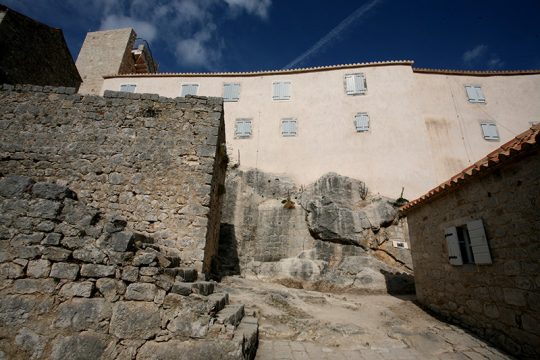 Knez's quarters (Knesi Cucha) or proveditor's residence (Alloggio del Proveditor) or palace (Palazzo del Proveditor) extends on a rocky cliff north of the mentioned stair and armoury position. It may have been built on foundations of the oldest buildings from the period of medieval Croatian kings and knez (medieval title used in Croatia, equivalent of duke, count or prince). According to the Venetian sources, there was a governor's office (Officio provisorio) or a chancellery (Cancelleria) at the entrance, and there were storages and rooms for officers, guards and servants on the ground floor. On the first floor, which had two smaller northern entrances, there were officers' rooms, reception, living room, service room, kitchen and pantry. At the beginning of the French government, judge and his secretary were stationed in the proveditor's residence for a short while, but they had to leave it for its friability. After Austrians restored it in the 19th century, commanders of the fortress and military engineers were accommodated there.
Knez's quarters (Knesi Cucha) or proveditor's residence (Alloggio del Proveditor) or palace (Palazzo del Proveditor) extends on a rocky cliff north of the mentioned stair and armoury position. It may have been built on foundations of the oldest buildings from the period of medieval Croatian kings and knez (medieval title used in Croatia, equivalent of duke, count or prince). According to the Venetian sources, there was a governor's office (Officio provisorio) or a chancellery (Cancelleria) at the entrance, and there were storages and rooms for officers, guards and servants on the ground floor. On the first floor, which had two smaller northern entrances, there were officers' rooms, reception, living room, service room, kitchen and pantry. At the beginning of the French government, judge and his secretary were stationed in the proveditor's residence for a short while, but they had to leave it for its friability. After Austrians restored it in the 19th century, commanders of the fortress and military engineers were accommodated there.
Bastions Bembo and Malipiero
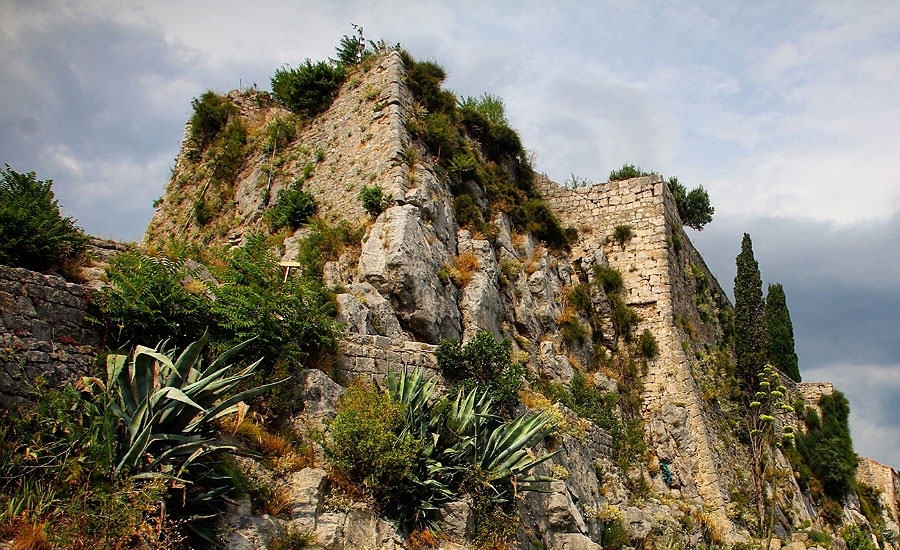 At the westernmost part of this defensive area, at the place where Kružić's tower was once, today is a bastion Bembo, the largest artillery position in the fortress. Towards the east, it is connected by bulwark behind the church to central pentagonal bastion Malipiero. Bastion Malipiero is enclosed by high walls in which there were broad openings for cannons, and now those are narrow. Below it, there is a vaulted passage that stretches to the eastern position Maggiore.
At the westernmost part of this defensive area, at the place where Kružić's tower was once, today is a bastion Bembo, the largest artillery position in the fortress. Towards the east, it is connected by bulwark behind the church to central pentagonal bastion Malipiero. Bastion Malipiero is enclosed by high walls in which there were broad openings for cannons, and now those are narrow. Below it, there is a vaulted passage that stretches to the eastern position Maggiore.
Position Maggiore
This second-largest location in the fortress is also protected by high walls with funnel openings for cannons. In its north-west corner there is a large gunpowder storage built by Austrians in the 1820s.
Position Šperun
The most protruding part of this defensive fortifications, and therefore of the fortress itself, takes up narrow raised prow of position Šperun (Sperone, Spiron). Hill Ozrna and road passing from the east were once overseen from there. Until the Venetian conquest of the fortress, there was high knez's tower that was severely damaged during the siege. From former high walls of this position, especially of the north wall, only low parapets with a series of loopholes have been preserved till today.
Church of Saint Vitus
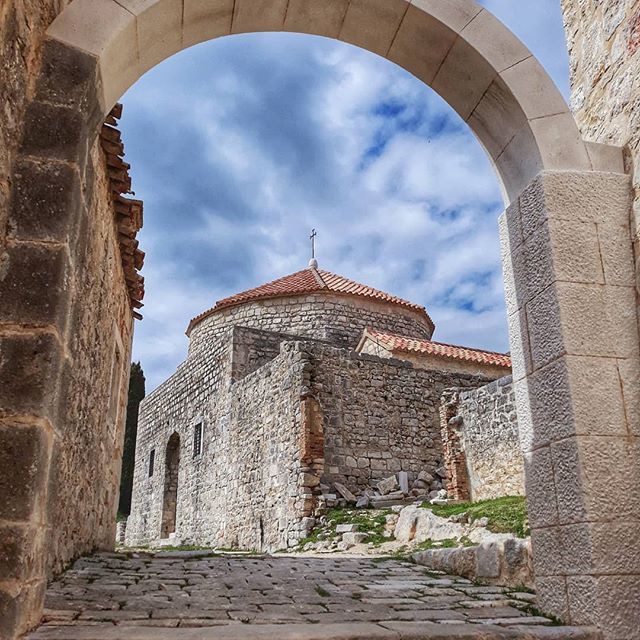 Church of Saint Vitus is situated between the bastion Bembo and bastion Malipiero. The church stands out as the most beautiful building in the fortress. Almost entirely preserved, this former Ottoman mosque, built on foundations of a medieval church, is one of rare examples of Islamic architecture on Dalmatian soil. It was built immediately after the fall of Klis in 1537 and served Ottomans for performing religious ceremonies. When Venetians occupied the fortress in 1648, the mosque was converted into the Church of St. Vitus. The following day sacred Mass was served there, and it was attended by General Leonardo Foscolo. Venetians have knocked down minaret and built quarters for officers in its place, which were there until the early 19th century when they were removed.
Church of Saint Vitus is situated between the bastion Bembo and bastion Malipiero. The church stands out as the most beautiful building in the fortress. Almost entirely preserved, this former Ottoman mosque, built on foundations of a medieval church, is one of rare examples of Islamic architecture on Dalmatian soil. It was built immediately after the fall of Klis in 1537 and served Ottomans for performing religious ceremonies. When Venetians occupied the fortress in 1648, the mosque was converted into the Church of St. Vitus. The following day sacred Mass was served there, and it was attended by General Leonardo Foscolo. Venetians have knocked down minaret and built quarters for officers in its place, which were there until the early 19th century when they were removed.
In western wall, there is a shallow rectangular niche with a built-in washbasin with stone frame, decorated with shallow relief with motifs of trophy weapons and with other decorative elements. This Baroque washbasin dates to the 17th century. It is believed that it once stood in the proveditor's residence from which it was transferred to the church, where a large stone shell was added to it as a holy water stoup. On low octagonal column, right of the entrance, a smaller holy water stoup was constructed with engraved year of 1658, which certainly marks time of its placement. There is an inscription in Latin engraved in a stone placed above the entrance and in translation it means:
what faith has built
faith will preserve
There were three altars in the church: the main altar dedicated to the fortress patron St. Vitus, altar of Blessed Virgin Mary and altar of St. Barbara. From once rich church inventory, nothing has been preserved in the Church of St. Vitus.
